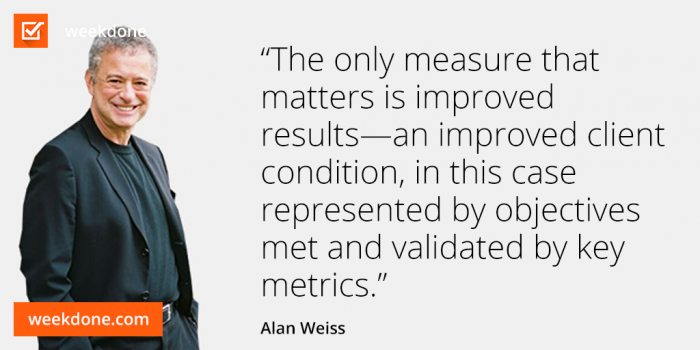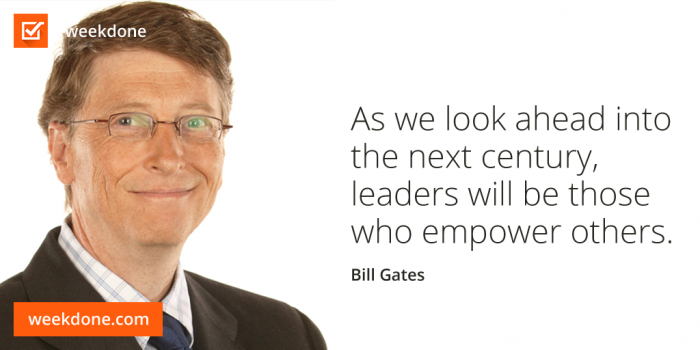There are a lot of tips and tricks about personal productivity, but not much has been written about company productivity. These 10 productivity tactics will help you to get the job done on a team and company level.
1st Pillar: Set the example
It might be a cliche, but before you start teaching others to be productive you have to get your own house in order. According to Elizabeth Grace Saunders – time management coach, you as a leader have to be smart about how you use the hours of your own workday. The meetings you attend, the emails you respond to, and the projects you sign on for – so your team can follow your lead.
“If you’re stretched and overloaded, you can’t think strategically about your own time let alone anyone else’s” said Saunders. So, the first pillar of any organization is to make time for work that matters, so your team can follow your lead.
2nd Pillar: Seek out crisis
Usually companies do anything to avoid a disaster, but it turns out every crisis has its own benefits. As the former Chief of Staff – Rahm Emanuel once said: “You never want a serious crisis to go to waste. It provides the opportunity for us to do things that you couldn’t do before”
Furthermore, according to the best-selling author Charles Duhigg, a company with dysfunctional habits won’t change simply because a leader orders it. Make use out of crisis to cultivate the need for change and new productive habits.
3rd Pillar: Share and track efficiency goals
Harvard MBA study found that people with goals achieve 10x as much as people with no goals. Therefore, as a leader it is smart to use some kind of goal-setting method within your company in order to increase the overall productivity.

The best method that companies like Google, LinkedIn and others have used is Objectives and Key Results. It is a perfect methodology to show and imagine what success looks like. It also helps employees to see the bigger picture and helps them to understand how their objectives align with the overall company goals.
How OKRs work?
- Define 3-5 key objectives for one quarter.
- Under each define 3-4 measurable results.
- Set and monitor weekly plans according to your quarterly objectives.
For a more thorough introduction to OKRs we recommend to read this article or see how other companies have been using OKRs to be successful – OKR case studies.
4th Pillar: Crowdsource productivity methods
Teams are known to achieve better chemistry and results if there is a place or a forum to share ideas. We at Weekdone urge leaders to implement a suitable brainstorming format to generate ideas within your team. There is a lot of different formats out there to choose from.
The benefits of brainstorming and sharing ideas are essentially getting ideas, solving problems and generally being better as a team. Furthermore, create a idea bank where everyone can contribute. Crowdsourcing productivity methods leads to quicker problem solving and improved engagement. For these reasons, ask your team to share and implement personal productivity tips to increase employee buy-in and overall efficiency.
5th Pillar: Clarify expectations and offer autonomy
According to a productivity coach, the key to improving individual productivity is to eliminate or delegate unimportant tasks and replace them with value-added ones. The last thing you want is for someone to begin his day thinking, “I have seven projects to work on, where do I start?” Be clear about your expectations and don’t micromanage:
- Describe the outcome you want to achieve
- Say how much time you expect people to spend on a particular task
- Get out of the way and give people permission to make decisions

6th Pillar: Shift from process to principles-based management
Although rare, there are companies that have made the shift from process to principles-based management. Companies like Red Hat, Wikipedia, Google, Amazon and Visa. Good decision principles help managers to let go without losing control and enable people make everyday decisions in diverse settings.
Create a doctrine to empower decision making across the organization.
- Frame a mission statement that has a shared purpose and explain how the purpose will be fulfilled.
- Transform your existing values into decision principles.
- Find real-world decisions and reverse engineer the most effective principles.
- Help people apply them to daily decisions.
According to HBR, Amazon Leadership Principles aren’t just a pretty inspirational wall hanging. These Principles work hard, just like the people do. Amazonians use them, every day, whether they’re discussing ideas for new projects, deciding on the best solution for a customer’s problem, or interviewing candidates. Good decision principles help people make everyday decisions in diverse settings.
7th Pillar: Provide instant access to workplace info
Such an obvious suggestion to increase productivity, yet poor communication is responsible for most of the troubles inside an organization. In fact, 86% of employees cite lack of collaboration for workplace failures.
Therefore, as a leader you can save a lot of time and energy by offering a reliable place where people can easily find, edit and share all the necessary information. Tools like Google Docs, Dropbox and Slack. In addition, if you need a tool to help employees see what others are working on, I would suggest to try out Weekdone.
8th Pillar: Teach people how to block their time
Since we are talking about productivity, time management is a key part in increasing your personal and team productivity. Again, such an obvious advice, but people still multitask and I feel an obligation to warn you that it comes with a price. Multitasking makes people slower and dumber. In fact, their productivity falls up tp 40%.
Great way to save time and be more efficient is to block your time:
- Identify your high priority tasks according to your OKRs
- Break tasks down into chunks and block out a time for each
- Use a calendar or a tool to visually block your time
- Schedule breaks and turn off all the distractions (Yes, your phone too!)
9th Pillar: Get over setbacks quicker
Evolutionary psychology has taught us that human beings are hard-wired to over-analyze the negatives. And it is your job as a leader to help others get over the setbacks quicker and therefore increase the productivity of your company.
- Set yourself up for success. Before a task, imagine possible roadblocks and plan how you will get over them.
- Shift the focus from failure to possibilities. After a setback, help people identify the problems and ask what they learned.
10th Pillar: Measure productivity
One of the building blocks of productivity is measuring it in order to see your improvement. Productivity is measured in terms of the rate of output per unit of input. According to Huffington Post, you should measure as much as you can. Keep an eye on all the metrics that matter for your team, from hours worked and reports produced to productivity per hour.
Use an accountability system, project management software, SharePoint, a common spreadsheet on Google Docs, Outlook Task Assignments, or a scoreboarding system that tracks important team metrics.
